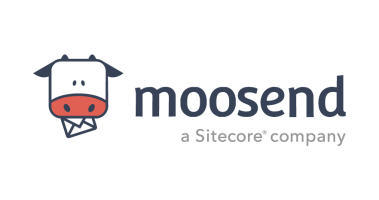
B2B marketing is getting tougher. As one Reddit message-board contributor put it recently: “Email open rates are tanking, LinkedIn content is mostly ignored and digital noise is overwhelming.” Doing more of the same simply doesn’t work anymore, which is why it’s remarkable that so many B2B marketers persist with the funnel-first tactics they were taught at marketing school years ago.
There’s nothing inherently wrong with funnel-first tactics – gain awareness, drive consideration, encourage purchase and then advocacy. But they only deliver part of the picture. Crucially, they ignore what drives and influences behaviour during the journey through the funnel. They tend to result in generic marketing – the same channels, the same formats, similar messaging and the same underwhelming results.
That’s why a growing number of B2B marketers are looking to behavioural science to break free from the orthodoxy and cut through the noise. Behavioural science looks at the factors, many occurring outside our conscious awareness, that influence our decisions. These range from internal factors including active psychological goals, incentives and moods, to external considerations such as peer behaviour, established norms and the physical context we’re in.
Understanding these enables us to better understand why people behave the way they do and, crucially, how we can shape that behaviour. In B2B marketing, where decisions are complex, budgets are shared and rational messaging falls flat, this sort of insight can deliver remarkable results in five key ways.
Decode decision-making
Firstly, behavioural science can help B2B marketers decode decision-making. Rather than viewing our audience as rational calculators of business benefits and risks, we’re able to understand the emotions, habits and context within which they actually make decisions.
For instance, consider the ‘What Will You Design Today?’ campaign from Canva, the design-software company. This featured real user stories, showing how anyone from small-business owners to activists can turn their ideas into reality. Rather than explaining how simple the software is to use or even the results it delivers, the campaign connected with its audience by showing people just like them overcoming relatable challenges.
Map the customer journey
Behavioural science can also give us valuable insights into the buyer journey. Traditional funnel-first marketing might encourage us to focus on creating a social media campaign, for instance. But a prospect’s awareness of our organisation might have come from passing an exhibition over the weekend, or chatting to an employee in a queue at the airport, rather than from our LinkedIn ad.
In B2B marketing, we typically don’t need to create a desire to buy, it usually already exists. So our focus is on influencing a buying decision and signposting how we will meet a prospect’s needs – both functional and psychological – better than our rivals. Having a clear view of where to focus to exert that influence is therefore very useful.
Reduce the cognitive load
Psychologists have identified two primary decision-making processes in humans: system one and system two. System one is a sort of automatic decision-making process. Because we humans are biologically wired to make the most-efficient use of our brain’s resources, we often revert to this system whenever we can. System two is more logic-oriented, deliberate and, most importantly, energy intensive. It helps us solve complex problems and bring structure to chaos, but using it can leave us mentally fatigued.
The brands we can engage with using system-one processes will typically be more successful than those that force us to use our energy-intensive system-two thinking. Look at the simplicity of the ‘Most Disastrous Campaign Ever’ (pictured above) from Hiscox, a business insurer. The brand used media space to illustrate the very risks it insures against. Here, it used the copyright of three well-known ad campaigns, from Specsavers, Weetabix and Cillit Bang, to advertise its services protecting against IP infringement.
Far from the typical B2B sales pitch detailing product benefits, this recognised the context within which its audience sees its ads, and effortlessly captured attention among all those entertaining consumer-facing ads. Most of all it made it easy for the audience to understand what it was trying to communicate.
Reconfigure planning processes
Too many B2B marketers plan contents, formats and channels. “We’re launching a new line, so let’s create a brochure.” Or, “The exhibition we already attend is coming round, so let’s book our pitch.” Or, perhaps the most common phrase in B2B marketing: “I’ll put a deck together.”
Far better to begin with what we want to achieve and work backwards from there. Clarity and focus on this often results in a far more creative exploration of the different ways an outcome might be achieved.
Use behavioural levers
Finally, we can look for ways to use behavioural levers such as social proof, authority and scarcity to build trust and influence pricing. These are commonplace in consumer marketing but too often ignored in B2B marketing. This is a mistake. The behavioural scientist Richard Shotton recently tested 10 of the most established consumer-psychology tactics in a B2B setting and found that nine of them demonstrably affected consumer behaviour.
We’re used to seeing this with social proof – think, for example, of Slack claiming that it’s trusted by more than 100,000 teams, including IBM, Amazon and Stripe. There is considerable scope for B2B marketers to do more here and put behavioural levers to work for them.
B2B marketing is increasingly competitive, so doing more of the same simply won’t work. We need fresh approaches. Our consumer-marketing counterparts started using behavioural science a long time ago – around the time that consumer marketing became more important and competitive. It’s time that we in B2B marketing catch up.
Mark Hauser is an applied behavioural scientist at The Team, a brand consultancy

B2B marketing is getting tougher. As one Reddit message-board contributor put it recently: “Email open rates are tanking, LinkedIn content is mostly ignored and digital noise is overwhelming.” Doing more of the same simply doesn’t work anymore, which is why it’s remarkable that so many B2B marketers persist with the funnel-first tactics they were taught at marketing school years ago.
There’s nothing inherently wrong with funnel-first tactics – gain awareness, drive consideration, encourage purchase and then advocacy. But they only deliver part of the picture. Crucially, they ignore what drives and influences behaviour during the journey through the funnel. They tend to result in generic marketing – the same channels, the same formats, similar messaging and the same underwhelming results.
That’s why a growing number of B2B marketers are looking to behavioural science to break free from the orthodoxy and cut through the noise. Behavioural science looks at the factors, many occurring outside our conscious awareness, that influence our decisions. These range from internal factors including active psychological goals, incentives and moods, to external considerations such as peer behaviour, established norms and the physical context we’re in.





